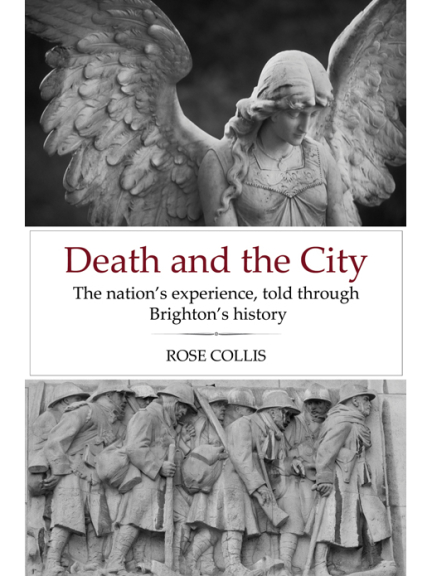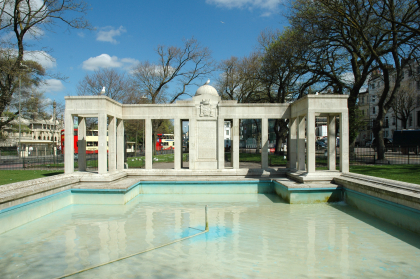
Remembrance Day in Brighton and Hove
Remembrance Day nears once again, and it's been said that 'Brighton was largely unaffected' by WWI.
However, in common with the rest of Britain, there was hardly a family which wasn't affected by the tragic conflict and its ramifications.
At 7 a.m, on 22 August 1914, a British soldier fired the first shots of World War I to come from an Allied rifle. He was from Brighton.
At 8.13 a.m. on 11 November 1918, a British soldier dispatched the telegram that announced the Armistice which ended World War I. He was from Hove.
What happened in between these two momentous events has been documented in countless books, films, plays and TV and radio programmes, but there can never be enough reminders or retelling of this world-changing catastrophe.
There were 9.2 million combat deaths in the First World War, including 887,282 Britons. The roll of honour of those who were either from, or enlisted in, Brighton, or with next of kin in Brighton, runs into nearly 500 pages.
The stories behind this list eloquently and poignantly typify and sum up what happened to Britain, its people and its allies. Most were not regular soldiers and sailors: they were shop and factory, tram and railway workers; schoolmasters, publicans and plumbers, bakers, greengrocers and grocers.
Some on the list had emigrated to Canada, New Zealand, Australia and South Africa, but came back to Blighty to enlist and fight for the Empire.
In 1917-1918, because of the military casualties, the deaths registered in Brighton outnumbered the births.
Some of those who enlisted—and died— were as young as fourteen years of age. The youngest Brightonian to die was Assistant Engineering Steward Ernest Bannister, aged just sixteen, who was serving on the troopship SS Royal Edward when it was torpedoed in the Aegean en route to Gallipoli on 13 August 1915.
He was one of 800 who drowned out of the 1,400 on board. The oldest was sixty-one-year-old Able Seaman Edward Alick Wilson, who died when merchant ship SS Oakwell struck a mine off Robin’s Hood Bay in March 1917.
In World War I, more than a million Hindu, Muslim and Sikh soldiers from far-flung parts of the British Empire served, mainly on the Western Front. 12,000 soldiers from the Indian Army were wounded in action and brought to hospitals in Brighton. The Royal Pavilion, Dome and Corn Exchange were all converted into hospitals. The Hindus and Sikhs who died were cremated at The Chattri, a site on the Downs near Patcham.
One of the most tragic features of World War I was that it was not uncommon for families to lose more than one member, as experienced by many Brighton households: for instance, brothers Mark and Alfred Routhan, from Elm Grove, died within three months of each other; less than a year later, their brother was also killed. William and Mary Anne Norman of Hastings Road lost their sons, Frank, Sidney and William, while The Offens’ home was in an almost constant state of grief: Henry and Lucy Offen had eleven children in total, two of whom died in infancy. They lost their sons Abraham, Frank and Henry to war, Abraham dying from his wounds at the family home in Camden Terrace. Lucy died on Armistice Day 1918.
The Armistice came into force at 11 a.m. on 11 November 1918, but the killing didn’t stop immediately: a further 10,000 deaths occurred on Armistice Day. They included Corporal John Rhodes of the RAF, stationed in Greece, the son of John and Ada Rhodes of Upper Gloucester Road, Brighton.
On 7 October 1922, the World War One memorial to the 2,597 Brighton servicemen and three women who died was unveiled on the Old Steine by Admiral of the Fleet, Earl Beatty.

Photo by: Dr Anthony McCintosh . Copyright for Photograph: Creative Commons
You can read more about how Brighton was affected by the Great War in two books by Rose Collis: http://www.rosecollis.com/books/new-encyclopedia-of-brighton/
and http://www.rosecollis.com/death-and-the-city/
Both are available in paperback and Kindle editions via Amazon or from City Books, Western Road.
Writer, performer and alternative historian, I've lived and worked in Brighton since 1997. My work includes everything from my one-woman show, 'Trouser-Wearing Characters' to my non-fiction books, including...
The following Cookies are used on this Site. Users who allow all the Cookies will enjoy the best experience and all functionality on the Site will be available to you.
You can choose to disable any of the Cookies by un-ticking the box below but if you do so your experience with the Site is likely to be diminished.
In order to interact with this site.
To help us to measure how users interact with content and pages on the Site so we can make
things better.
To show content from Google Maps.
To show content from YouTube.
To show content from Vimeo.
To share content across multiple platforms.
To view and book events.
To show user avatars and twitter feeds.
To show content from TourMkr.
To interact with Facebook.
To show content from WalkInto.